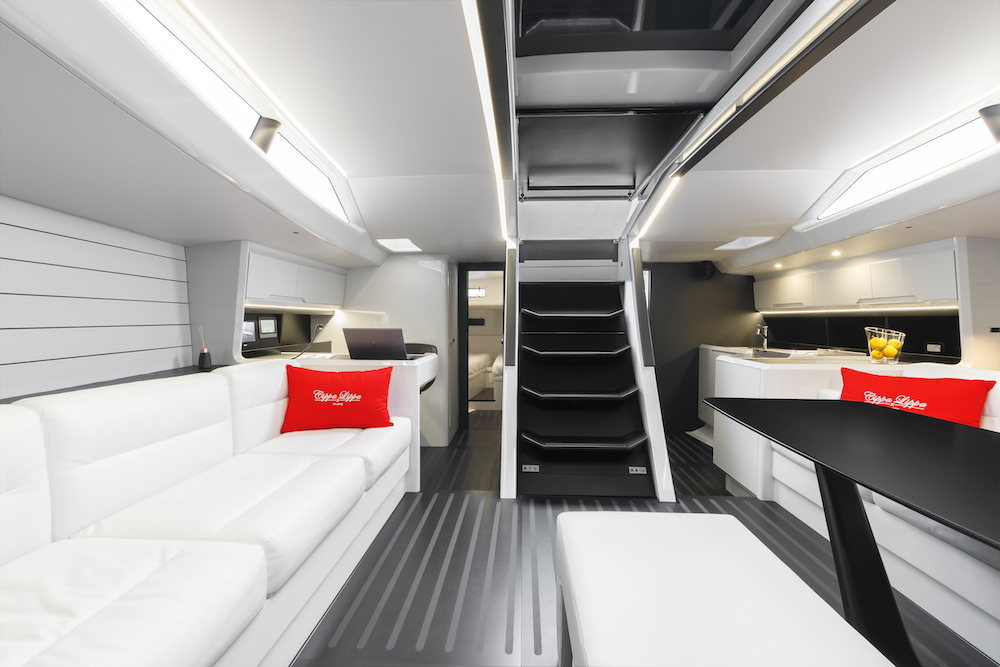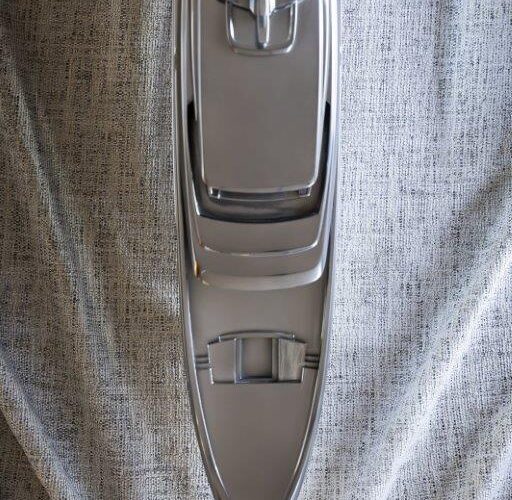The brief came from a highly experienced owner on his 10th yacht who wanted a fast, light 60 footer with a canting keel for a shallow draft. A yacht that could really deliver performance-wise but was more than just a straightforward racer. It had to straddle two worlds and be both the ideal boat for an owner, who is one of the most active competitors on the Italian racing scene, and a cruiser on which to teach his grandchildren the art of sailing.

Mylius Yachts’ co-founder and head yacht designer Alberto Simeone smiles at the memory. It sounded easy but when it came down to the nitty gritty, the owner was asking for a contradictory craft. “A racer design has just one goal. But designers usually spend most of their time penning cruisers and so there are a lot of factors to reconcile in a single design. A lot. And it isn’t easy by any means”.

But once he started interacting with the very special individual who is now the proud owner of Cippa Lippa X, the new Mylius 60 CK (or Canting Keel), Simeone’s doubts quickly evaporated. Simeone and his team initially considered simply doing a canting keel version of the tried and tested Mylius 60, a fast cruiser of which five have been built, but quickly moved on to creating a whole new design. “An LOA of 18.6 metres and 17.6 along the waterline,” explains Simeone. “A 5.4m beam. Flared mid-sections but very flat aft. A canting keel and, most importantly of all, a displacement three tonnes lighter than the Mylius 60. Combined with a racer-type sail plan, that guarantees a boat that is fast and light in all points of sail but especially running free”.

With an infused carbon-fibre hull and pre-preg bulkheads to yield the stiffness demanded by the canting keel. the Mylius 60 CK really tested the skills and ingenuity of yard and designers alike. “It was our first canting keel and, racers apart, there are very few 60 footers on the market with one but it meant we could deliver a 3.6m draft,” says Simeone. The new hull retains the Mylius Yachts’ stamp on its deck but also has a sportier layout.

That means the wheelhouse is further forward and there is a separate working cockpit. There is also a double barber hauler for the jib rather than a track on the deck. Combined with the hydraulic winches this all makes for easy sailing. The deck also features a series of hatches and companion ways in addition to a transparent section in the wheelhouse to draw light and air into the interiors where the décor centres around the contrast between the high-tech black of the carbon-fibre bulkheads and furnishings and the white of the seating, upholstery and ceilings.

“Carbon-fibre proved very helpful in creating interiors that reflected the boat’s spirit,” agrees Simeone. The décor is almost aggressively decisive. But the owner also wanted the interiors to be comfortable, light and easily adaptable for racing. As a result, the lockers are actually carbon-fibre and leather cases that are easily removed. Like the rest of the interiors, they are clad in taut, spare lines.

“We did a lot of ergonomics and design research. We even managed to fit the canting keel under the sole and in one of the seats around the table without using up any extra space”. Even the canard box is cleverly concealed in the master head forward. All told, the layout is classic with the chart table to starboard and the galley to port of the companionway. In the large central saloon area, a lightweight carbon-fibre table faces a sofa.

There are two two-berth guest cabins aft with heads. Those six berths are boosted by two bunks in the crew cabin foremost. Mylius’s signature materials abound in spaces that complete a light, sporty, comfortable yacht. “If this were a car, it would be a grand tourer,” concludes Simeone. “I think we achieved everything we set out to in a balanced way, resulting in what I would describe as a thoroughbred. A thoroughbred racer. I have always tried to design yachts with as few compromises as possible to ensure they were genuine sailers. And this one definitely is”.






